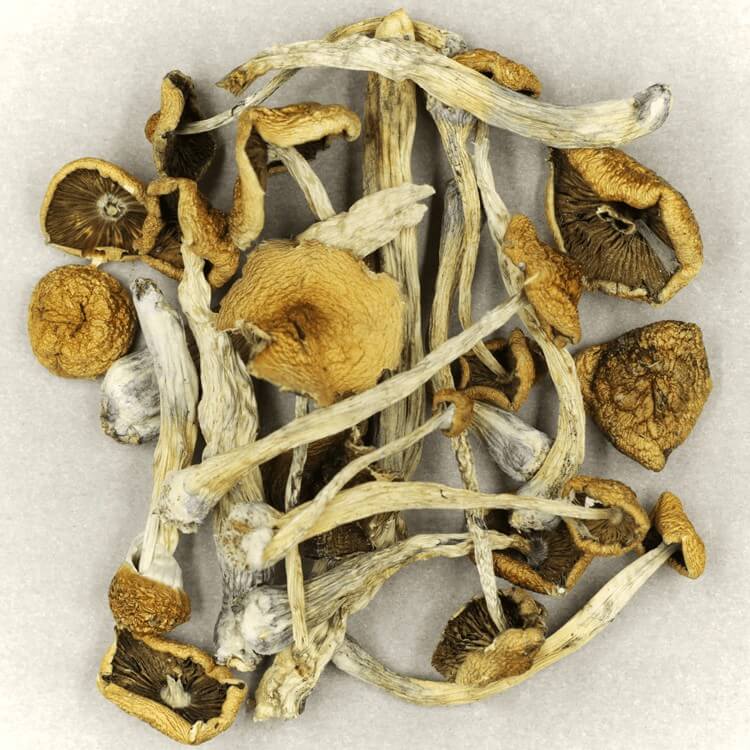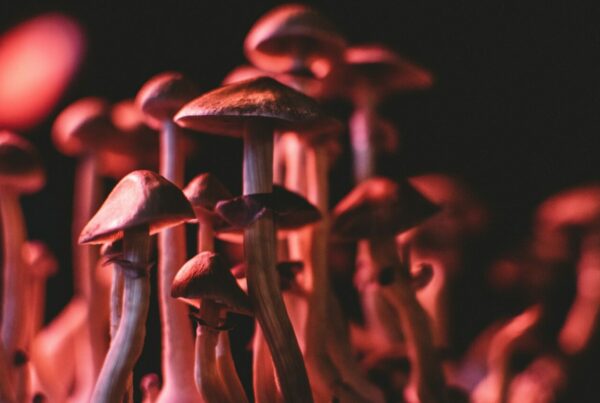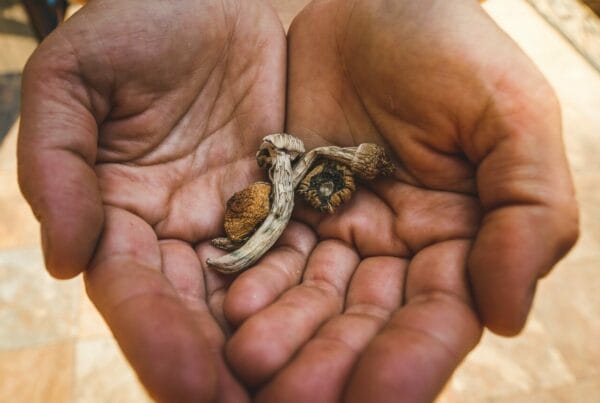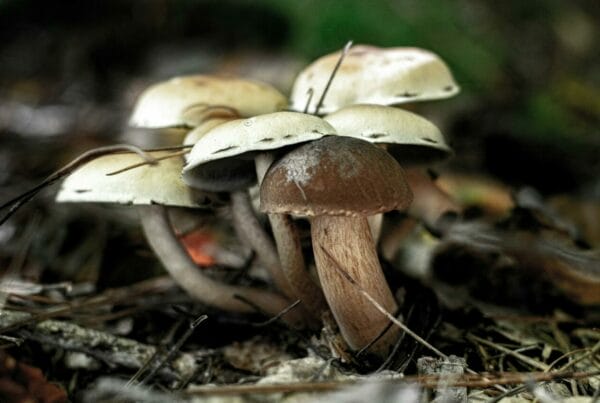Once deemed as mere fantasy, the strength of Psilocybe mexicana has now been recognized due to groundbreaking psilocybin research. The exploration in the field of psychedelics is consistently unveiling its therapeutic potential, progressively earning it a place in the world of medicine. This evolving sector is seen as promising, with experts diligently working to determine safe dosage levels for medical applications.
Key Takeaways
- Researchers are utilizing advanced techniques like liquid chromatography coupled with tandem mass spectrometry to gauge the potency of mushrooms.
- Psilocybe Mexicana, along with other mushroom species, is being examined in clinical trials to evaluate its possible therapeutic applications.
- Understanding the genetic diversity in magic mushrooms is crucial in formulating an accurate dosage guide.
Psychedelic Mushrooms: Emergence from the Shadows to Research Frontlines
Psilocybe Cubensis was previously known to help with only a limited number of conditions. However, psilocybin is currently making monumental progress in uncovering its concealed health benefits.
Specialists are exploring the potential of Psilocybe Mexicana and other potent strains with the help of clinical trials and comprehensive research. Regardless of whether the studies are conducted in vivo or in vitro, this strain effectively reflects the true effects and advantages of this fungal species.
Psychedelics on the Rise in the Marketplace
Once concealed, now uncovered—the ongoing progress and findings are progressively gaining public attention, especially among those seeking therapeutic solutions. Conventional treatments for mental health disorders often prove inadequate, leading individuals to explore more dependable alternatives.
The solution? Magic mushrooms.
Individuals battling mental health concerns are resorting to psilocybin, which has demonstrated potential in treating depression, alcohol dependency, anxiety, compulsions, tics, chronic pain, and more.
Currently, medical professionals are investigating unique methods to accurately determine the perfect dosage for safe patient administration. Notably, a group of researchers from the University of Texas has constructed a model to extract psilocybin and psilocin concentrations.
Thus, it’s feasible to clinically ascertain the potency of magic mushrooms.
The Distinctive Features of Mexicana
Comprehensive studies have already been carried out on Golden Teachers, Blue Meanies, and B-Plus. However, to expand our knowledge of safe magic mushroom consumption, further research on other species is required.
The Mexicana species has gained popularity in research circles, not only due to its ancient origins, but also because of its relatively lower potency, which potentially meets the standards of pharmaceutical drugs.
Even though this Mexican variety may not be as potent as other species, it still shares their effects. As the practice of microdosing gains traction among patients, this strain becomes a prime choice.
This species exhibits steady levels of psilocybin and psilocin, akin to other strains. So, what makes it stand out among its counterparts? Its historical and anthropological impact holds the answer.
Delving into a Deeply Rooted “Mexican” History
In ancient times, psilocybe mexicana proliferated in moss. Indigenous communities held these psilocybin mushrooms in high regard for their varied applications, often linked to mystic or otherworldly occurrences.
Now, let’s focus on Mexican mushrooms. Over two millennia ago, the earliest known usage of these mushrooms was by the indigenous people of North and Central America. The Aztecs, an ancient ethnicity, dubbed these mushrooms as the “food of the Gods,” or “teonanácatl” in their native tongue.
If the Aztecs were still around today, they would attest to the transformative, emotionally profound, and mentally grounding effects of the Mexicana—despite not being familiar with these contemporary terms.
Even with various cultivation techniques, this mushroom has managed to retain its natural psilocybin levels, bearing witness to its genuineness. This authenticity is a standard that both researchers and psychedelic research institutions greatly appreciate.
Innovative Strategies for Psilocybin Content and Potency Evaluation
A team of ten scholars from the University of Texas at Arlington, along with other research institutions, devised a novel method to test the potency of psychoactive substances in mushrooms. This innovative pattern of measurement combines liquid chromatography and tandem mass spectrometry.
Let’s look at two breakthrough techniques:
- Liquid chromatography is a technique that separates and analyzes the components of chemical mixtures. It’s utilized to examine the active compounds in shrooms. The technique involves passing a liquid sample through a column filled with a solid substance (the stationary phase). The various chemicals in the sample have different interactions with the stationary and mobile phases, resulting in them separating at different speeds as they navigate the column.
- Spectrometry typically investigates the interaction of matter with electromagnetic radiation across a range of wavelengths. This method identifies and quantifies substances by examining the specific wavelengths of light that molecules absorb and scatter. This enables the assessment of the electronic, vibrational, and rotational states of the chemical.
This method was used to analyze five types of magic mushrooms. The study found that the average total amounts of psilocybin and psilocin in these strains ranged from 0.879 to 1.36. These levels exceeded those found in many other varieties, such as Bull Run and Cambodian. The researchers confirmed the accuracy of their study by comparing their findings with results from other independent laboratories.
The agreement between the findings of the two laboratories further supports the reliability of their testing procedure in accurately determining the potency of the mushrooms.
If these findings are confirmed by experts, they could add a new set of techniques to the existing methods for testing the strength of psychedelics. This could serve as an added safety measure to prevent inaccurate dosage determinations.
Expanding Research to Include Other Species
Extending research to include other species can prove beneficial. It can deepen our understanding of the health advantages linked to different strains and provide crucial data on the effects of less potent mushrooms.
Moreover, this could help inform people about how different dosages can affect the psychedelic experience. By comparing the Mexican strains with stronger ones like Psilocybe Cubensis, researchers can understand how the varying concentrations of active substances can impact therapeutic results.
For example, the Blue Meanies strain produces more potent hallucinogenic effects, which could potentially be effective in treating conditions like depression. On the other hand, lesser potent strains may be more suitable for microdosing or subtle uses like mood enhancement or improving focus.
Diverse Genetics Contribute to Safer Treatments
It’s not widely recognized that various cultivars or varieties possess distinct genetic profiles and
Different strains of hallucinogenic mushrooms exhibit variations in potency, chemical composition, and effects. Acknowledging these differences allows healthcare providers to select the most suitable strain for specific medical applications and adjust doses to meet individual requirements. This personalization minimizes risks and maximizes benefits.
Take, for instance, Psilocybe Semilanceata (Liberty Caps) or Psilocybe cyanescens. Their unique alkaloid profiles potentially prove beneficial in managing anxiety. On the other hand, synthetically grown mushrooms might be better suited for addressing substance abuse or compulsive behaviors. This diversity enables the formulation of customized treatments that are safer and more effective.
From this, we can infer that the genetic diversity in hallucinogenic mushrooms, along with innovative techniques for strength evaluation and identification, is key to devising safer medical treatments.
Enhanced Safety in Medicinal Use
Let’s contemplate the potential benefits of safer dosage administration.
- Decreased risk of overdosing: Accurate dosing eliminates the concern of overdosing. This also means product labels should be more explicit to avoid misunderstanding by consumers.
- Increased predictability: With precise dosing, individuals can better predict the effects or experiences they may encounter during their psychedelic experiences. This can reduce intense sensations and anxiety, thereby improving patient satisfaction.
- Uniform measurement: Accurate dosing can encourage a standard metric, making it easier for people to refer to charts for potential effects.
Experience the Advantages of Accurately-dosed Shrooms with Revolutionary Potency Tests | Order Magic Mushrooms Online at Shroom Store Canada
If these two cutting-edge techniques continue to be applied, you’ll avoid unforeseen effects. Complement this with smart online shopping at Shroom Store Canada. We offer dried mushrooms that ensure a serene, relaxing psychedelic journey without excessive psychoactivity. Buy psychedelics online in Canada via Shroom Store Canada.
Frequently Asked Questions
Are Big Mexicans and Psilocybe Cubensis the same?
No, Big Mexicans and Psilocybe Cubensis are distinct strains of mushrooms, so it’s crucial to not confuse them. Big Mexicans have a higher compound isolation, ranging from 0.5% to 1%, making them significantly more potent.
In comparison to Psilocybe Cubensis, these mushrooms look different. For instance, the former often has a bell-shaped cap, while the latter is usually conical.
What’s the highest concentration possible in Mexican mushrooms?
Psilocybin and psilocin concentrations in Mexican mushrooms can reach a maximum of 0.25%. These concentrations are relatively low, similar to the Golden Teacher strain. However, they can still lead to intense psychedelic experiences that might have health benefits.
What’s the medically safe dosage?
Generally, a dosage from 1 to 2 grams is recommended. But, this can change based on factors like how it’s consumed, the individual’s metabolism, and the specific strain’s potency. Some individuals prefer to take sub-threshold doses from 0.05 (50mg) to 0.025 grams (250mg) to reduce the hallucinogenic effects.





